Two weeks ago I met Jeanne and Hubert Mwangaza in a poor suburb of Lubumbashi, Democratic Republic of Congo (DRC), where I was on a video assignment with UNICEF. Hubert could not wait to tell me – on camera – [...]]]>
Two weeks ago I met Jeanne and Hubert Mwangaza in a poor suburb of Lubumbashi, Democratic Republic of Congo (DRC), where I was on a video assignment with UNICEF. Hubert could not wait to tell me – on camera – how proud he is that all his children are HIV negative. Him and his wife are both HIV positive.
When they met, Jeanne had given up any hope to have children. Hubert convinced her that prevention of mother-to-child transmission could give them HIV-negative babies.
He accompanied Jeanne to ante-natal visits and checked that she took her antiretroviral medication regularly. He was with her during each birth of their three daughters and when they were tested for HIV.
For her last-born, Marie, Jeanne was put on the new revolutionary one-pill-a-day antiretroviral treatment known as life-long treatment.
Women on this new regimen are able to breastfeed their babies safely for six months, provided that they adhere to the treatment. Marie has to take another HIV test at six and 18 months, but Hubert is confident that his little girl, like her elder sisters, is born without the virus.
Only a few years ago, this family’s story would have been the exception rather than the rule. Today, Botswana, Ghana, Namibia and Zambia have virtually eliminated new HIV infections in children, and a few more countries in Africa are close behind them.
However, children’s access to antiretrovirals remains unacceptably low – only three in 10 eligible children receive HIV treatment in many of the most affected countries.
Dramatically improving these numbers is among the top goals for the 22 priority countries targeted by the Global Plan that aims to elimination new HIV infections among children by 2015 and keeping their mothers alive.
Securing child health is only a fraction of the job to be done. Too many women are getting infected and not all pregnant women living with HIV are accessing life-saving treatment.
Between 2009 and 2012, there has been no decrease in the number of new HIV infections among women. We need to redouble efforts in preventing HIV among adults- and especially young women- through a combination of safer sexual behaviour, voluntary medical male circumcision and use of antiretroviral therapy among discordant couples.
Voluntary family planning services for all women, including women living with HIV, can prevent unwanted pregnancies and help reduce new HIV infections among children. Young women in particular should have access to voluntary planning and comprehensive information about preventing HIV.
In the next months, Inter Press Service Africa, in collaboration with UNAIDS, Unicef and UNFPA, will tell many stories like Jeanne and Hubert’s — stories of courage and resilience that will rekindle our hope that a generation of babies born without HIV to healthy mothers living with HIV is around the corner. Other stories will highlight challenges to solve if we are to turn that corner by 2015.
The Countdown to Zero New HIV Infections project explores community, policy and expert efforts across Africa to achieve these goals through in-depth feature stories, portraits and testimonies.
Follow the stories here: http://www.ipsnews.net/news/projects/countdown-to-zero/
Enter the conversation:
Facebook: www.facebook.com/countdowntozeroHIV
Twitter: @ZeroNewHIV
]]>Marie Mendene is an extraordinary activist from Cameroon and one of the first African women to say publicly that she lives with HIV, in the 1990s, when AIDS was a disease of shame and blame.
This is one of my favourite photos about AIDS [...]]]>
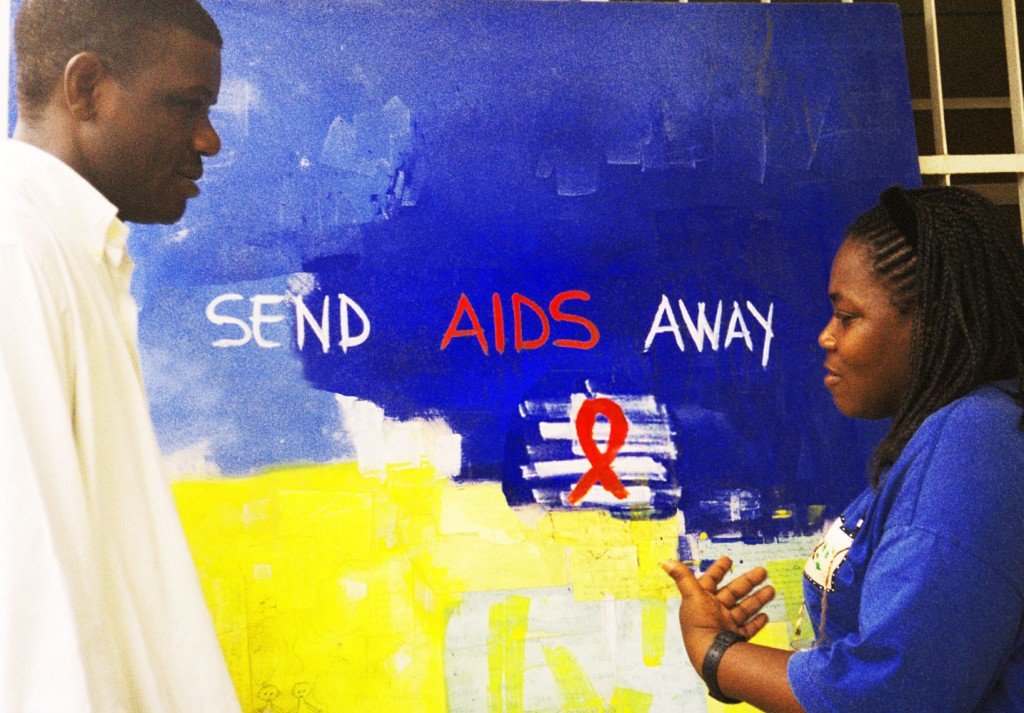
By M. Sayagues
Marie Mendene is an extraordinary activist from Cameroon and one of the first African women to say publicly that she lives with HIV, in the 1990s, when AIDS was a disease of shame and blame.
This is one of my favourite photos about AIDS in Africa. I took it at Sunshine, her NGO in Douala, in 2003, before antiretroviral treatment became widely available. Only a few Cameroonians in cities could get the life-saving pills.
The day I took the photo, Marie had queued for seven hours and received only half of her monthly ARV pills. She was understandably upset about the poor logistics and delivery of medicines. AIDS magnified all the inadequacies of health systems.
That was then. Today, nearly three million people in Africa are on ARV treatment. This seemed like a dream then, but activists were campaigning hard to make it come true.
Marie had a clear vision of activism. “We should go beyond the begging bowl and the appeal to compassion, beyond the stage of being used to do prevention and awareness, and become part of real-decision making around AIDS,” she told me.
Marie is to the right in the pic, with a fellow activist.
]]>Ranging from sassy dialogue to black humour, these are one-minute comedies with a smart punchline. The Mother from Hell and the Spoiled Brat skits have [...]]]>

Make safe sex fun. By M. Sayagues
Ranging from sassy dialogue to black humour, these are one-minute comedies with a smart punchline. The Mother from Hell and the Spoiled Brat skits have a Borat-like humour. And who would have thought a condom ad from India would depict anal sex?
Click on the ad from Argentina even if you don’t speak Spanish. Everybody who has been a teenager will chuckle about these teens, their parents and their predicament. (Watch it here)
Laughing got me thinking about how seldom one sees humorous ads about condoms in English-speaking Southern Africa. I have seen some cool ads in Mozambique, though – I think there were Brazilian advisors involved. Where is the fun?
Most ads about condoms in Southern Africa are earnest, even boring, stressing safe sex, HIV prevention, responsibility. Few treat sex as an activity filled with desire, romance, anticipation, indecision, ambiguity, and pleasure.
Yes, for man, sex may be forced, violent, unwanted, unpleasant, too quick, too slow, or too risky.
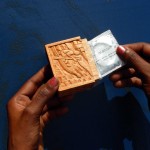
A pretty condom carrying box. By M. Sayagues
But for many others, it is not. Ads should target different segments. If we want to attract the attention of the young instead of totally turning them off, ads must be cool.
It is a fine balancing act. About three years ago, the South African anti-AIDS campaign LoveLife published a monthly insert in major newspapers, called Uncut that tried so hard to be blasé it was borderline pornographic.
There is a distance from acknowledging that young people have sex to portraying teens dressed like hookers in positions suggesting group oral sex. Many parents threw Uncut straight away. My daughter, aged 14 then and no prude, thought it cheapened girls.
After many complaints and public debate, Uncut changed. It went overboard. Now it reads like a church teen newsletter, wholesome and boring.
It may be that the terrifying scale of the AIDS pandemic in Southern Africa inhibits ad campaign planners and donors from portraying safe sex as fun. Maybe it is fear of offending churches, politicians and parents. And talking about sex has traditionally been taboo.
Yet, to get young people to practice safe sex, condoms must become part of their sexual paraphernalia and discourse. A bit of humour helps.
So have a laugh and tell us which is your favourite!
Ad selection courtesy of Chris Well, a designer and sexual rights activist at Conversations for a Better World. Check out his website for teens and reproductive health: www.15andcounting
So what headlines have grabbed you lately about male circumcision in South Africa? These caught my eye:
“The death toll in the Eastern Cape’s winter circumcision season has risen to 31”
“Circumcision ‘scam’ probed”
“Two [...]]]>
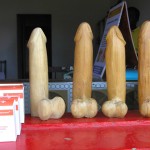
Hard task: defining sexual pleasure. Photo: M. Sayagues
So what headlines have grabbed you lately about male circumcision in South Africa? These caught my eye:
“The death toll in the Eastern Cape’s winter circumcision season has risen to 31”
“Circumcision ‘scam’ probed”
“Two on run after initiate dies”
As alarming and distressing as these headlines are – and the sad, desperate and greedy subtexts embedded in them – they don’t say much about the other big debate that is raging across southern Africa: the value of male circumcision to prevent HIV acquisition in heterosexual men, and what’s in it for women.
Well what’s in it for women is the topic du jour: Since observational studies had reported an association between male circumcision and reduced risk of HIV infection in female sexual partners, researchers in Uganda conducted an unblinded, randomised control trial to investigate this (Lancet July 2009) by circumcising some HIV positive men and not others. They found that circumcision did not reduce the risk of transmission to their female partners. So no luck there.
But what’s really getting gender activists of all genders to rise up from their sofas and comment on websites and chat rooms is the matter of sexual pleasure, and more specifically, the sexual pleasure of women.
What is sexual pleasure?
Now as a gay man I have to confess this is a topic that I have no personal experience of, but I am as interested in the notion of pleasure for my sisters of any sexual orientation as I am in mine.
I believe sexual pleasure should be a human right advanced to all, though for some of us this may be a progressive realisation of rights as we work through all the baggage of our socialisation!
I’m raising this issue because one of the many studies emerging as a companion to the now famous three circumcision trials, which showed the partial protective efficacy of male circumcision, suggests that “women whose male sexual partners were circumcised report an improvement in their sex life.”
Nearly 40% said sex was more satisfying afterward. About 57% reported no change in sexual satisfaction, and only 3% said sex was less satisfying after their partner was circumcised.

Ancient Egyptians get the snip.
Top reasons cited by women for their better sex life: improved hygiene, longer time for their partner to achieve orgasm, and their partner wanting more frequent sex, said Godfrey Kigozi at the Fifth International AIDS Society Conference on Pathogenesis, Treatment and Prevention of HIV in Cape Town recently.
Firstly, if you look at the data above, while 40% did say the sex was more satisfying, the majority in fact said there was either no change or it was less satisfying. Is the headline summary of the research accurate? Why do we need to spin this data?
Fluid and enigmatic
But really what’s vexed me, and others, is this notion of pleasure and how we define it. Those of us who come from a “social” as opposed to “biomedical” or “public health” paradigm would argue that sexuality is fluid, it changes over our lifetimes, it may be context or relationship dependent, it is informed not only by our gender but our class and orientation.
So “pleasure” in a sexual encounter may be shaped by mood, the time of life, the way a woman is relating to her partner that day, whether she was exhausted from chores, her beliefs about female agency in a sexual encounter, whether she was menstruating or in menopause, whether foreplay had occurred.
Pleasure, surely, is variable, contextual, dynamic, changing, unpredictable. Even enigmatic sometimes: a woman may have a good orgasm but still feel angry with her husband or partner. She may never have had an orgasm but feel happy that he does. She may secretly masturbate after he falls asleep and feel fantastic after that.
A biomedical or public health perspective, I would argue, reduces men and women and their practice to simple categories and distinct binaries: gay vs straight; masculine vs feminine; satisfied vs unsatisfied; safe vs dangerous.
This is necessary if you want a simplified view of the world and if you want “proof” that most women will be happy to have their male partners circumcised.
Who needs long and complicated qualitative research when a checklist with a choice of three options tells us all we need to know to placate those pesky social scientists with their doubts and ifs, buts and maybes? But how do you capture the nuances of satisfaction in a questionnaire?
You don’t. I think pleasure is much more complicated than that – and we need better and more interesting research to tease it out (as it were). What do you think?
Read more on controversial issues around male circumcision, sexual pleasure, human rights, viagra and condoms.
]]>Journalist [...]]]>
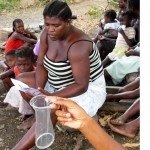
A Femidom demo. Photo: M. Sayagues/Irin
In a contest for irresponsible tourism, taking the last two female condoms at a Botswana border post as a souvenir would run neck-and-neck with littering the Central Kalahari Game Reserve with soda cans. Hey, spare a thought for a sister: a local woman might need them. I mean the condoms, not the soda cans.
Journalist Bridget Hilton-Barber writes, in the South African weekly Mail & Guardian, about the female condom’s popularity among Batswana women. (Femidoms rub the right way, 14 August). Then she plucked the last ones at the border post, as a souvenir, to lie in her office drawer.
Well, their popularity is a very good reason to leave the condoms in the box for someone who wants to use them.
Correction: Someone who needs to use them.
An average of three out of ten pregnant women at public antenatal clinics in Botswana are HIV-positive. This is an improvement over ten years ago, when four or five out of ten pregnant women were HIV-positive. Condoms helped achieve this drop. (Read about AIDS in Botswana here) Comes with a price
Condoms have a cost and female condoms are the most expensive, even when subsidized by donors. A male condom costs US$0,4; a female condom, US$2.50.
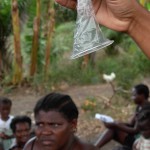
Photo: M. Sayagues/Irin
In March, its sole manufacturer, Female Health Company, announced a cheaper version in synthetic rubber instead of polyurethane that will cost around US$0,60 but is not yet available.
Looks cheap? Remember, many Africans live on less than one dollar a day.
Besides price, supply is a problem. Logistics bottlenecks plague the delivery of goods in Africa, from life-saving antiretrovirals to malaria pills, from sanitary pads to birth control pills, from car spares to school books, from snail mail to email.
There is no difference between a female condom in Botswana, South Africa or Holland, I can assure you. The difference is that a consumer in Holland can buy one or get a free one anytime she wants. In Africa, it ain’t that easy.
So control your grabbing impulse, dear tourist. Have you heard of sustainable fishing and harvesting – or condom plucking? You will be doing a sister a favour by leaving those condoms in the box if you don’t need them.
If you want to see a Femidom, buy one at a drugstore back home.
Responsible tourism is more than eschewing python boots and turtle soup or using the towels at the luxury safari camp more than once.
And tell the tour operator not to allow his Dutch clients to pluck condoms for keepsake either. Would they take the KLM airplane life jackets as souvenirs?
This is SO not rubbing it the right way.
]]>